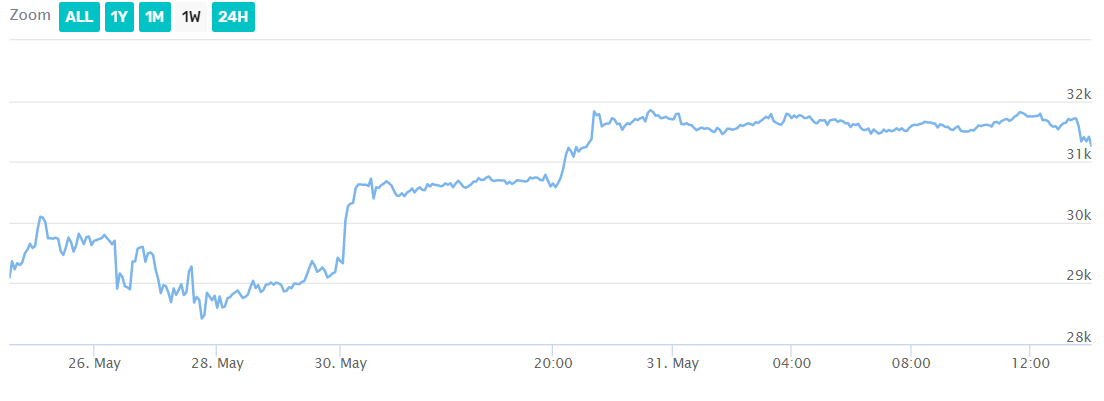31 May 2022 Samantha McLauren
Argentina Becomes Increasingly Crypto-Friendly Amid Surging Inflation
Argentina, once among the top economic performers in Latin America, is now facing increased inflation. The reasons are many, but Argentines are pointing at the lack of trust in the central bank or government overspending, as well as the depreciation of the Argentinean peso as leading catalysts for the inflation surge.
The multitude of factors pushed 37.3% of the Argentina population under the poverty line, erasing most of the citizens’ savings and decreasing their purchasing power. Now, more and more of the population is seemingly trying to save what is left in their wallets via the world’s leading crypto – Bitcoin.
Bitcoin as an inflation hedge?
The mantra of Bitcoin being a more powerful inflation hedge than gold, for example, seems to be alive and well, as “crypto penetration” in Argentina had reached 12%, according to a report by Americas Market Intelligence. The figure is double than the same metric in Peru, Mexico, and other countries in the region, which are also fighting with similar financial problems. However, Argentina’s inflation reached as high as 60%, which pushed many of its citizens to seek digital shelter, despite the market being in the red for several months and the central bank forbidding financial institutions from operating with digital assets.
Furthermore, Argentines are trying to diversify their crypto portfolio with stablecoins, mostly due to the fact that many of them are pegged to the U.S. dollar, which acts as a form of guarantee for their savings, as well as easy access to foreign currencies, especially as Argentina imposed strict capital controls on foreign exchange services.
On the other hand, Ethereum co-founder Vitalik Buterin noted that both crypto and stablecoin adoption are going up significantly, but the growth may be reverted if the situation around the U.S dollar changes and it begins to lose value.
Cautious crypto regulations amid widespread adoption
And while Argentina slowly drowns in inflation, the governmental approach to crypto regulations is still cautious, as Argentine President Alberto Fernandez that the debate on crypto regulations is global, so the regulators must take caution when offering any legislation when it comes to cryptos.
Nevertheless, Fernandes also noted that he recognizes cryptos with their advantages, because “it helps contain inflation” and that, “in a sense, it’s a steady asset class.”
Crypto markets on the rise
Argentines may have felt the LUNA crash severely, but the trend in the crypto markets seems to be reversing, despite analysts claiming that the sector is officially in a bearish cycle.
Indeed, Bitcoin managed to secure its gains and recorded a 7% weekly increase, which resembles a current price tag of $31,388.54 per BTC, according to CryptoBrowser.
 Source: CryptoBrowser
Source: CryptoBrowser
Ethereum, the altcoin leader, is fighting its way towards $2,000 with a 3% daily gain, and almost erased the price drop from the past week.
Other projects are also in the green, with Cardano (ADA) being among the top performers, increasing in value by 16% on the day.
As expected, most of the double-digit gains come in the DeFi/NFT realm, as AAVE gained 10% daily, while Axie Infinity’s AXS token spiked 22% to completely revert the trend from the past seven days.
The biggest gainer in the top-100 list, however, is Waves, which increased its value by over 50% in just 24 hours, which translates to a 60% weekly increase.
Bitcoin Ethereum eth Bitcoin price Cardano bitcoin news cryptocurrency news crypto news Crypto Price Ethereum Price Adoption Aave





























